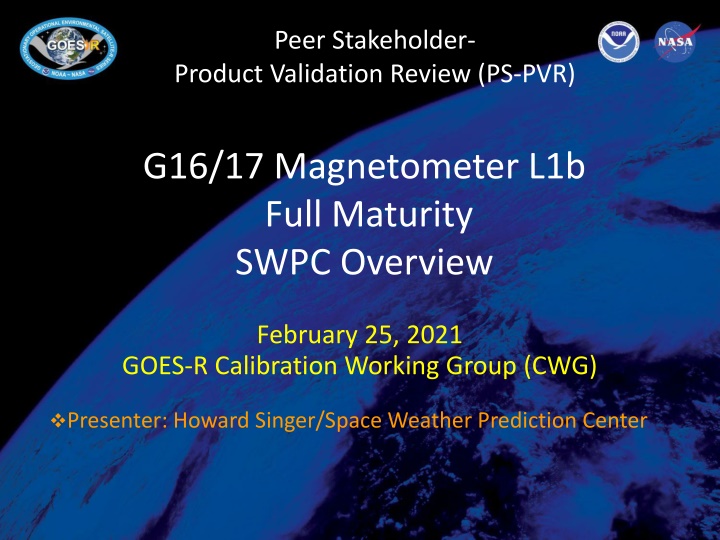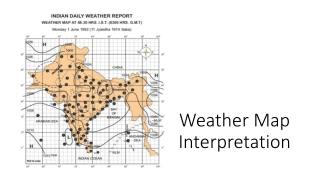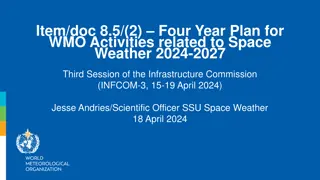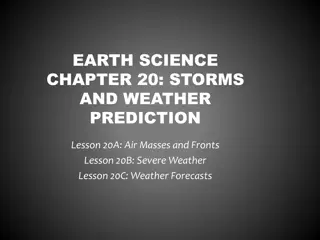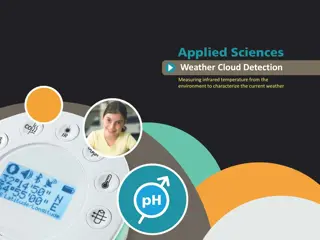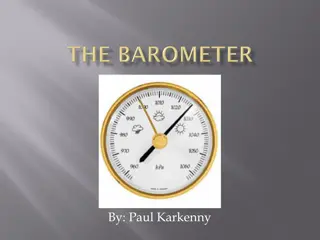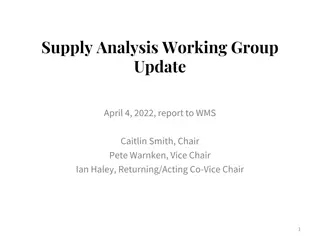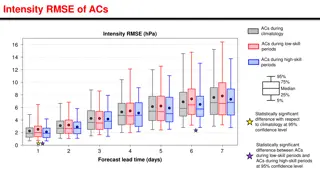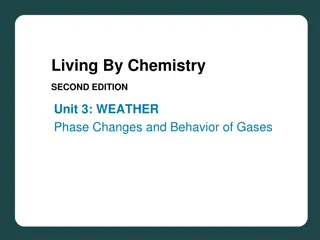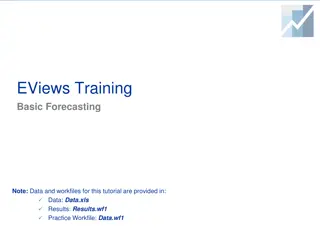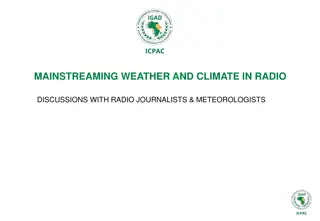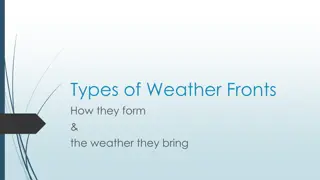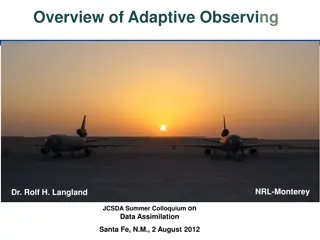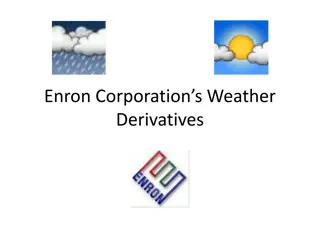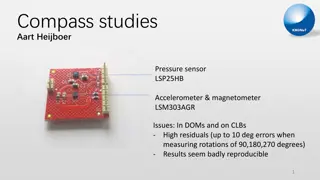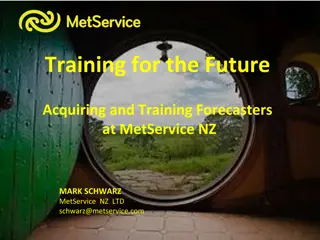GOES Magnetometer for Space Weather Forecasting and Research
Utilizing GOES magnetometer data, forecasters and researchers can gain insights into geomagnetic disturbances, radiation belts, solar wind impacts, satellite anomalies, and more. The magnetometer's operational use extends to providing situational awareness, supporting satellite users, detecting solar wind shocks, conducting research, and developing new applications in space weather science.
Download Presentation

Please find below an Image/Link to download the presentation.
The content on the website is provided AS IS for your information and personal use only. It may not be sold, licensed, or shared on other websites without obtaining consent from the author.If you encounter any issues during the download, it is possible that the publisher has removed the file from their server.
You are allowed to download the files provided on this website for personal or commercial use, subject to the condition that they are used lawfully. All files are the property of their respective owners.
The content on the website is provided AS IS for your information and personal use only. It may not be sold, licensed, or shared on other websites without obtaining consent from the author.
E N D
Presentation Transcript
Peer Stakeholder- Product Validation Review (PS-PVR) G16/17 Magnetometer L1b Full Maturity SWPC Overview February 25, 2021 GOES-R Calibration Working Group (CWG) Presenter: Howard Singer/Space Weather Prediction Center
Magnetometer Measured Impacts at Earth-Some Examples Solar Wind Shocks and Sudden Impulses When these impact Earth, large disturbances in Earth s magnetic field can cause geomagnetically induced currents (GICs) in power grids Forecasters use DSCOVR to give warnings, but GOES magnetometer shows impact at Earth and contributes to alerts Magnetopause Crossings Satellite operators have utilized GOES magnetometer data to understand when their satellite, normally in Earth s magnetosphere, is located in an extremely different plasma and field environment (e.g. affects on torquer coils); but also important for understanding major losses of radiation belt particles Storms and Substorms Forecasters use changes in the orientation of the geosynchronous observed magnetic field as an indication of the potential for the release of built up energy and subsequent injections of energetic particles that can cause spacecraft charging and particle precipitation into the auroral zone affecting HF radio wave propagation Satellite Anomalies GOES-11 magnetometer data were key to understanding the environmental conditions related to the 8-month outage of Galaxy 15
Magnetometer: Operational Use Summary Providing forecasters and the public with situational awareness of the level of geomagnetic disturbances Contributing to energetic particle products that use the orientation of the magnetic field for specifying the radiation belts and using in radiation belt models supporting satellite users Utilizing for real-time, operational validation of the Geospace model that supports power grid operations Detecting magnetopause crossings and alerts for the detection of solar wind shocks and sudden impulses at Earth Supporting sounding rocket launch decisions Conducting research for understanding the space environment and producing future products Developing techniques for new operational applications (e.g. wave-particle interactions needed by radiation belt models) Providing data to NESDIS NCEI archives and one of the most used data sets by the scientific community (through NCEI and NASA)
Customer Testimonials As you may know I run 2 large consortium projects on space weather just now, one on forecasting the radiation belts for satellites and one on radiation belt science that feeds into better forecast models (Sat-Risk and Rad-Sat). So, we use the GOES magnetometer data for operational space weather forecasting, and for research that will improve the forecasts. -- Professor Richard B. Horne, Head, Space Weather and Atmosphere, British Antarctic Survey The GOES series represents a long continuous record of high-quality magnetic field measurements from a key region of the space environment, the geostationary orbit. Accurate knowledge of the magnitude of that field is critical for magnetospheric dynamics research. --Professor Tuija Pulkkinen, Chair, Department of Climate and Space Sciences and Engineering, University of Michigan In our opinion, GOES magnetometer data are of outstanding interest and value, due to the unique properties of the geostationary orbit. Dr. Nikolai Tsyganenko (GOES-R program uses Tsyganenko models for MAG validation) The GOES magnetic field observations are quite unique sources of geomagnetic field data in the magnetosphere. Dr. Tsutomu Nagatsuma, Director of Planning and Collaboration Promotion Office Social Innovation Unit, Sendai, Japan 4
Customer Needs and Requirements The magnetopause location is known to be important for radiation belt losses and for specifying the level of space weather disturbance in the magnetosphere and ionosphere, both of which are important for operational considerations. 5
GOES 16/17 Magnetometer Data Illustrating Variations at Different Geosynchronous Locations For Example: P (solar wind pressure, tail stretching, substorm energy release) E (tail stretching and energy release) N (Current systems)
Arcjet Firing Contaminates Operational Observations Arcjet use on GOES-16 is becoming more frequent than planned Requires customer application attention Correction algorithms require maintenance and modification 7
G16/17 MAG Full Validation PS-PVR SWPC Overview MAG serves an important capability that characterizes the geospace environment including the level of disturbance and controls the trajectory of radiation belt particles The NCEI team (in collaboration with the GOES project) has done an excellent job characterizing the instrument performance leading to future improvements and implementing many of the corrective measures to deal with both instrument and accommodation issues Tasks remain, such as: improvements to arcjet correction; thermal corrections (including use of machine learning techniques); reduction and characterization of noise; long-term trending for bias stability; and efforts to utilize the new GOES-T/U GMAG including cal/val and any on-orbit performance issues SWPC is highly appreciative of the excellent work and diligence provided by NCEI, as well as the support provided by the entire GOES project SWPC concurs with NCEI s recommendation for MAG to transition to Full Validation status, and we recommend continued effort to maintain and improve the data quality for space weather users
